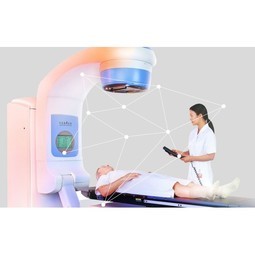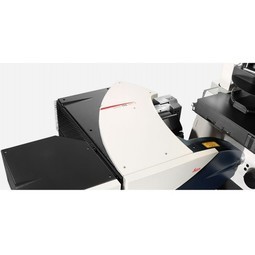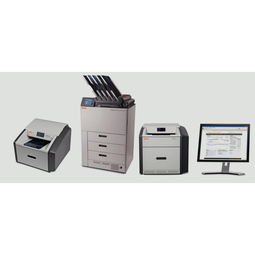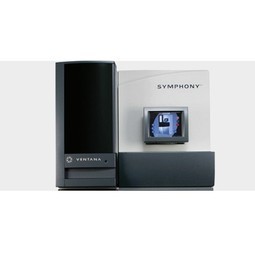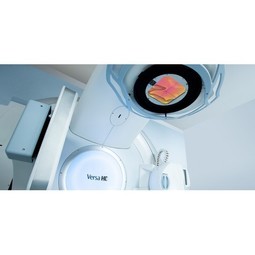Case Studies.
Our Case Study database tracks 18,927 case studies in the global enterprise technology ecosystem.
Filters allow you to explore case studies quickly and efficiently.
-
(9)
- (5)
- (2)
- (1)
- View all
-
(6)
- (4)
- (2)
- (1)
-
(6)
- (3)
- (2)
- (1)
-
(4)
- (2)
- (1)
- (1)
- View all
-
(3)
- (2)
- (1)
- View all 5 Technologies
- (7)
- (4)
- (3)
- (2)
- (2)
- View all 11 Industries
- (7)
- (6)
- (4)
- (3)
- (3)
- View all 10 Functional Areas
- (12)
- (4)
- (3)
- (2)
- (1)
- View all 14 Use Cases
- (7)
- (4)
- (4)
- (2)
- (2)
- View all 6 Services
- (21)
Selected Filters
21 case studies
|
Transformation for IoT Business Model in Connected Industrial Vehicles
PTC
CNH Industrial wanted to put IoT-enabled viechles onto the market. Whether monitoring a single machine or integrating an entire fleet, operators are able to track the status, speed, and movement of machines and their performance and also receive alerts on issues that may require service by a qualified technician to improve uptime and overall effectiveness of the vehicle.
|
|
Reducing Mean Time to Repair by 50 Percent with SmartConnect
PTC
Varian has a variety of medical instruments and cancer treatment systems that support today’s leading-edge treatment modalities with Intensity Modulated Radiation Therapy (IMRT) and Image Guided Radiation Therapy (IGRT). These treatment systems are deployed at more than 1,000 hospitals and clinics worldwide. Traditionally, system and equipment problems have required one or more service technicians to diagnose and resolve issues at the hospital site, resulting in higher costs and lost patient treatment time. For a typical treatment device, the loss of one day’s treatment time can result in 35 patients missing their treatments, which is something hospitals and patients cannot afford. Problem resolution can be complicated if incorrect or incomplete information has been provided by the operator, and also in cases where the problem cannot be recreated once the technician is on site. Operators of the Varian Acuity™ imaging system, an integrated simulator and verification tool for testing patient treatment plans, occasionally require expert assistance. Image quality optimization, solving operational problems, and tuning system performance can cost time and money for Varian and their customers.
|
|
Providing Proactive Support with Intelligent Smart Services
PTC
“For us to maintain low costs and high customer satisfaction while providing improved response times, we need a better, faster way to resolve issues beyond dispatching onsite technicians,” explains Mark Hessinger, Executive Director of Worldwide Service at Gerber Scientific. Gerber faces a continuous need to train new personnel as they are brought into the service organization. A change in strategy for service allows Gerber to build a stronger technical support organization and a more efficient process to bring new field service engineers up to speed. “We have a lot of tenured employees in North America and Europe,” observes Hessinger. “In seven years, the loss of man years will accelerate, so we need to retain product knowledge before it becomes a greater issue and impacts our customers.” Hessinger and his team realized that they needed a solution to remotely connect to their products and identify, diagnose, and resolve issues. Ideally this would happen before their customers even become aware of a problem, reducing the dispatch of onsite technicians or improving first-time fix rates when onsite visits are required. By collecting data from their products deployed in production, the company could begin addressing the aging workforce issue by capturing and retaining information. Collecting information on consumables and parts could automate consumable resupply, optimize spare parts inventory, and enable Gerber to provide true preventive maintenance. “We do not have mean time between failure data because we don’t know how many hours our customers are actually using our products,” says Hessinger. “Some customers use our products a few hours a day, while others use them 24/7. Obtaining actual usage data will help us better plan our spare parts and the consumables required for run times.” Other capabilities identified to help build a business case for their initiative included minimizing product downtime, automating software patch distribution, offering value-added services, providing engineering with product usage data, and delivering remote training on product capabilities for distributors and new technicians.
|
|
Reducing Unscheduled Downtime and Customer Efficiency
PTC
Leica Microsystems attributes its success to providing innovative products and superior customer service. To extend its leadership position, the company began exploring a more proactive service approach for its line of confocal microscopes and tissue processors. The Leica Microsystems project team began searching for a global software that would allow for the shift from a reactive to proactive service company. Their initiative focused on downtime avoidance and the prediction of potential problems across the globe, targeting issue prevention. As a result, customers would not only benefit from minimal product downtime, but from faster service and increased productivity. To obtain approval and funding for the initiative, the team would need to prove to management that this service strategy shift would result in optimized instrument uptime and reduced costs of service.
|
|
Carestream: Market Disruption and Improved Customer Relationships
PTC
Medical Imaging Healthcare imaging centers provide diagnostic imaging from computed tomography (CT), magnetic resonance imaging (MRI), digital mammography and other advanced imaging systems to physicians in digital format as well as printed on radiographic film, tailored to the referring physician’s requirements. The global market for diagnostic print services is mature and increasingly commoditized due to consolidation into a few large vendors that have heightened customer’s sensitivity to total cost of ownership. Carestream sought a new and innovative way to improve the customers total cost of ownership through consumption based services that has resulted in the creation of a new business model that has disrupted this commoditized market and changed its dynamics in Carestream’s favor. Healthcare Information Systems Carestream also had an opportunity to optimize critical maintenance and performance of its Healthcare Information Solutions (HCIS) portfolio, which simplifies clinical data management throughout different imaging departments. As the IT ecosystem expands from just back-end infrastructure to more bed-side diagnostics or patient facing, maintenance and system uptime becomes even critical to healthcare providers.
|
|
Preserving Security and Operator Safety
PTC
To improve customer satisfaction by minimizing downtime of automated optical inspection machines while preserving security and safety.
|
|
Improving Instrument Recovery Time and Reducing Downtime
PTC
While in the midst of developing SYMPHONY®, a fully automated slide staining system for standard Hematoxylin and Eosin (H&E) staining, Ventana realized that they required a remote service solution to ensure that customers received an exceptional level of service. However, with a tight timeline to develop and launch this new product, there was some reluctance to integrate additional software. “There was some internal reluctance toward implementing the remote service technology with our SYMPHONY instrument given the short timeframe,” explains Greg Dameron, Director of Development at Ventana. “In fact, the executive team informed me that if the software would delay the SYMPHONY launch by even one day, then we would not implement it at all.” The company began evaluating commercial remote service offerings, seeking a solution that would provide value to customers without disrupting system stability. “Our products are based on stability, so we needed the remote service technology to be stable as well,” says Dameron. Ventana sought to reduce instrument downtime to fewer than 24 hours by remotely monitoring all field instrumentation on a 24/7 basis. This would enable the abilities to remotely diagnose and repair issues, provide “over-the-shoulder” troubleshooting and training for users, and track inventory to automatically replenish reagents in real time. “We felt strongly that delivering remote service would help us achieve a response time that we could not otherwise meet,” says Dave Flaten, Vice President and General Manager of the Primary Staining business unit at Ventana. “We believed that it would become an integral part of the product line.”
|
|
Maximizing Clinical Availability and Performance with System Connectivity
PTC
For over 30 years Elekta has been responsible for introducing many market leading, critical technological advances in radiation oncology. Elekta’s Linear Accelerators support a range of pre-configured and optional delivery techniques, providing the physician with the flexibility to tailor the treatment to suit the needs of each individual patient. Remote access was unavailable on complex devices and Elekta was unable to understand machine performance based on real data, which meant the company could not respond immediately to customer problems. This, in turn, meant that Elekta was unable to detect and solve problems on the spot, restricting the company to a reactive service model. A typical patient treatment schedule could require daily treatment for a period of 4-6 weeks, making machine uptime extremely important. Given the complexity of the device and the amount of data that would need to be collected, it was obvious that an automated solution was required. The infrastructure would need the ability to manage the data volume from the devices and also provide a platform that would scale in both size and complexity. “When a customer buys a service agreement, what they are buying is system uptime. They are buying the ability to consistently deliver treatment… patient to patient,” says Martin Gilday, Vice President of Services at Elekta. “Service is not simply a single engineer with a trunk load of parts, but a full portfolio of technical expertise delivered via multiple channels...it’s a big change in the way that you think about service.” Elekta’s success has been built upon innovative engineering, which led to a culture of in-house work. As the company matured and grew, it realized that this was not necessarily the most effective way of working. With the complexity of the product itself, internal engineering expertise would be crucial to solve the company’s service challenges. While the product itself was unique, the methodologies and best practices of accessing and servicing the product were based on industry standards. When customers have service issues that need to be resolved, machine data must be collected and interpreted, and engineers need a deep level of skills and understanding. An integrated solution that brought the data, knowledge, and skills together in a highly connected environment was required. “Customers see connectivity as providing efficiency gains,” says Bruce Fullerton, Vice President of Service and Support. “Their key performance indicators are based around how many customers they can treat in a given space of time.”
|
|
Volvo Group Delivers Digital Thread Through Lens of Augmented Reality
PTC
In today’s rapidly changing market, customization has become the new normal. This presents new quality assurance challenges as product complexity and unique configurations increase in volume and rate of change.Volvo’s engines are very sophisticated with 4,500 different engine information variants for just one plant and for 13,000 variants for the full plant for referencing.Training new operators on the complex inspection procedures takes five weeks, which adds to the overall cost of quality.
|
|
CVRx® manages risk and accelerates time-to-market with PTC integrity
PTC
CVRx, a medical device company, was developing a second-generation system, XR-1, for Baroreflex Activation Therapy. The company initially used IBM Rational DOORS as the requirements management engineering platform. However, after a year, CVRx needed a more flexible, configurable, and customizable platform that could also facilitate requirements reuse. As the project evolved, the company recognized a need for a broader toolset capable of more than just requirements management. To meet compliance regulations and ensure quality while maintaining an aggressive schedule, CVRx needed a comprehensive solution that could manage its requirements, specifications, test cases, change requests, defects, and other documents, processes, and records, as well as automate compliance reporting.
|
|
JLG Industries Revamps Service Parts Pricing Strategy with PTC’s Solution
PTC
JLG Industries, a renowned manufacturer of aerial work platforms and telehandlers, was facing increasing competitive pressures on its replacement parts business. The company was using a cost-plus pricing strategy for its service parts, which was proving ineffective. This approach created a 'blind spot' and lacked market adaptation. Customers were seeking more cost-effective solutions and started buying non-OEM replacement parts from competitors, compromising quality for lower pricing. This trend signaled to JLG the need for a new approach to parts pricing. The challenge was to optimize pricing for 140,000 service parts with a department of one.
|
|
Lexmark teaches customers how to save money by printing less
PTC
Lexmark, a leading printer and multifunction machine manufacturer, decided to exit the consumer inkjet business in 2012 to focus on the enterprise market. The company aimed to shift its focus towards software and services that could help customers save time and money. Lexmark's new strategy was more consultative, emphasizing complete solutions that reduce costs by maximizing the efficiency of networked workgroup-style printers and multifunction machines. However, this service-oriented strategy required real-time visibility into its global operation to offer service-level agreements that guarantee minimum downtime.
|
|
Using Integrity™ Modeler ™ as a core platform for a global systems engineering strategy
PTC
Alstom Transport, a promoter of sustainable mobility, was in need of a SysML (Systems Modeling Language) tools supplier that truly understood the standard. They conducted a comprehensive evaluation of all the leading SysML tools on the market, focusing on several key criteria: conformance with the SysML standard, ease of integration and extensibility, collaborative design, ability to manage product lines, and quality of support. As a multi-national company, Alstom Transport’s systems design projects involve teams in a variety of countries. Therefore, a development environment truly capable of supporting collaborative working across dispersed teams was important to Alstom Transport.
|
|
Technip ensures the reliability of its calculations using PTC Mathcad
PTC
Technip, a world leader in project management, engineering, and construction for the energy industry, faced challenges in optimizing the design of its installations to meet the needs of the oil and gas giants. The company was using manual methods for equation data production and entry into Excel, which led to many errors. The company also needed to adapt quickly to the many developments in calculation over the past 20 years. The design office needed a solution that could provide high transparency and perfect legibility for all operations carried out, which was not possible with Excel.
|
|
National Oilwell Varco uses PTC University’s eLearning and assessment solutions to improve design and accountability
PTC
National Oilwell Varco's Pressure Control Group (PCG) was facing challenges in training and assessing its engineers to ensure they design quality products, meet regulatory requirements, and follow strict internal guidelines. The traditional industry practice of pairing new hires with mentors was proving inadequate due to the mentors' own project commitments. The lack of formalized training and accountability led to significant rework, slowing the design process and potentially impacting product quality. The company needed a paradigm shift in its training approach to improve engineering quality and accountability. Additionally, the company was struggling to deliver on a tremendous backlog of business due to substantial business growth over the past several years.
|
|
How Metso implemented Service Parts Management (SPM) in the Cloud to unearth value from its global supply chain
PTC
Metso, a world-leading industrial company, was facing challenges with its global supply chain. The company was using a location-based, on-shelf availability model, which resulted in isolated and independently managed inventories across its 39 locations. This approach was inefficient and reduced Metso's ability to serve its customers effectively. The company also had to manage intricate material flows, making it difficult to predict part lead time. Furthermore, the constraints of a legacy system and a focus on individual supply issues rather than broader strategic improvements were hindering Metso's growth and profitability. The company needed a solution that could match its complicated network and grow with its business.
|
|
Automotive Parts Supplier Launches IoT Initiative in SixWeek Sprints Powered by PTC IoT Manufacturing Solutions
PTC
HIROTEC AMERICA, a part of the HIROTEC Group Companies, faced significant operational downtime issues. The machinery involved ran without condition-based monitoring, operating until a failure occurred. This reactive maintenance approach led to lost opportunities and inefficiencies. HIROTEC had been collecting industrial data from sensors and machines across customer production facilities and its own systems. However, this data was manually separated and stored across multiple sources, making it inaccessible for collective and systematic analysis. To improve quality, reduce downtime, and optimize production schedules, HIROTEC needed to implement a modern, automated solution that could gather maintenance and operational information into one source and offer actionable recommendations to its quality professionals.
|
|
Trane Customers Get Better Air and More Value with Intelligent Services
PTC
Trane, a leading provider of heating, ventilation, and air conditioning systems, realized that their commercial customers were more concerned about how working with the organization helped them achieve their objectives rather than the quality of their HVAC systems. This led to a shift towards a more service-centric approach. The need for transformation arose from the scale and scope of Trane building services, with over 2,000 technicians serving Trane commercial customers worldwide. The opportunity for increased revenue from services also drove the transformation. Furthermore, the constant pressure on customers to do more with less, especially since the global recession, necessitated a shift in Trane's approach to help them cut costs, improve productivity, and optimize investments.
|
|
Strengthening traditional design expertise by improvements in 3D CAD skill
PTC
Fujitsu Peripherals, a manufacturer with a corporate philosophy of “Making an impression through reliable technology,” was looking to enhance the utilization of the PTC 3D CAD that all designers had been working with in-house. The company believed that if 3D CAD software could be more deeply understood, allowing for greater levels of mastery, it could drastically improve operational efficiency. However, initial skill diagnostics revealed that while the designers had the expertise to accurately create 3D models, they had not mastered the tools, and thus could not create the 3D models efficiently. This led to the decision to implement a course of “training reinforcement.”
|
|
NedTrain Parts Management
PTC
NedTrain, a leading provider of rolling stock maintenance in the Netherlands, faced several challenges after splitting from NS, the Dutch national train operator. They were contracted by NS to maintain 2,800 units, ensuring no more than 170 were in maintenance at any one time. However, NedTrain often exceeded this limit, requiring NS to fund spare capacity. NedTrain also had to deliver the highest levels of quality and availability for the lowest lifecycle costs to attract non-NS customers. To achieve these objectives, NedTrain knew it had to reduce inventory by improving planning and forecast, improve parts availability across its network of 9 main locations, 35 service locations, and 65 warehouses, reduce harmful part cannibalization, distinguish planned from unplanned usage, and synchronize business processes.
|
|
PTC Supports Healthcare Company’s Plans for Global Growth
PTC
The customer, a global healthcare company, was looking to completely change how it organizes and manages service content. The company was facing a moment of change and realized that the task wasn’t just about modifying their documentation process. They needed to reinvent their business practices for creating, delivering, and updating service knowledge. The company had pursued an acquisitions strategy to increase its healthcare business product portfolio over the last several years. As a result, the individual teams that make up the technical authoring division often used different strategies and tools to complete assignments. With authors located around the world, this approach made it challenging to monitor projects and establish standard best practice.
|





